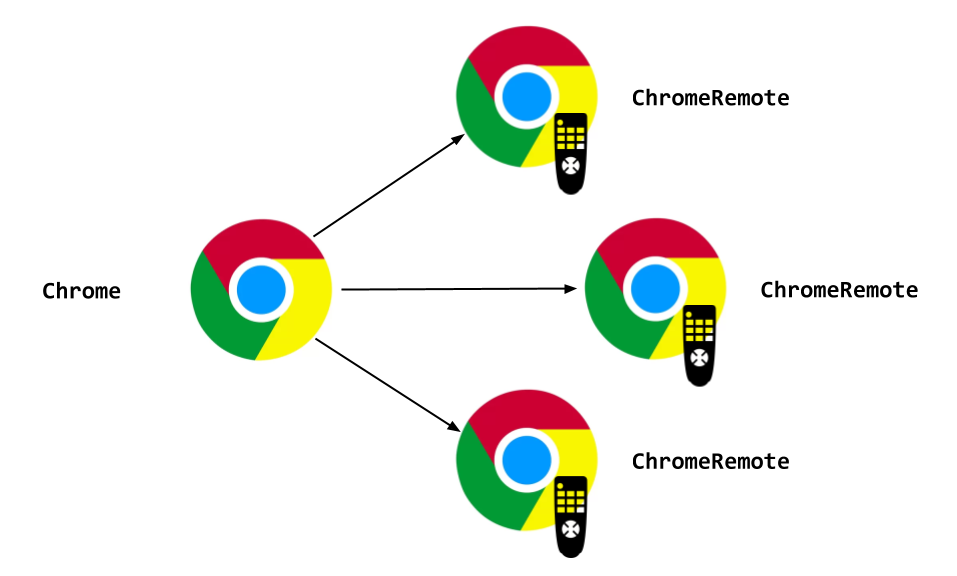Python Selenium Remote for ChromeDriver
Project description
ChromePy
ChromePy makes it possible to create just one Google Chrome instance and multiple ChromeRemote remote controllers. It avoids opening multiple Chrome instances as it can be very resource consuming.
The workflow is as simple as:
Chromecreates a Selenium Chrome Driver instance and saves session data on a text file.ChromeRemoteuses this session data to create a Selenium Remote instance and control the same browser driver.
Install
Just install from pip
pip install ChromePy
Usage
To start a Chrome instance
from chromepy.chrome import Chrome
chrome = Chrome.instance
chrome.get('https://google.com')
print('Chrome running at ', chrome.current_url)
print(chrome.command_executor._url, chrome.session_id)
input('Press any key to quit chrome...')
chrome.quit()
To start Remote instances. Remember not to call remote.quit() as it will kill the chrome instance as well.
from chromepy.remote import ChromeRemote
remote1 = ChromeRemote()
print('remote1 url', remote1.current_url)
remote1.get('https://google.com')
remote2 = ChromeRemote()
print('remote2 url', remote2.current_url)
This examples can be found in the examples directory.
Changelog
- 0.0.5 - Basic Chrome and ChromeRemote
Project details
Release history Release notifications | RSS feed
Download files
Download the file for your platform. If you're not sure which to choose, learn more about installing packages.
Source Distributions
No source distribution files available for this release.See tutorial on generating distribution archives.












